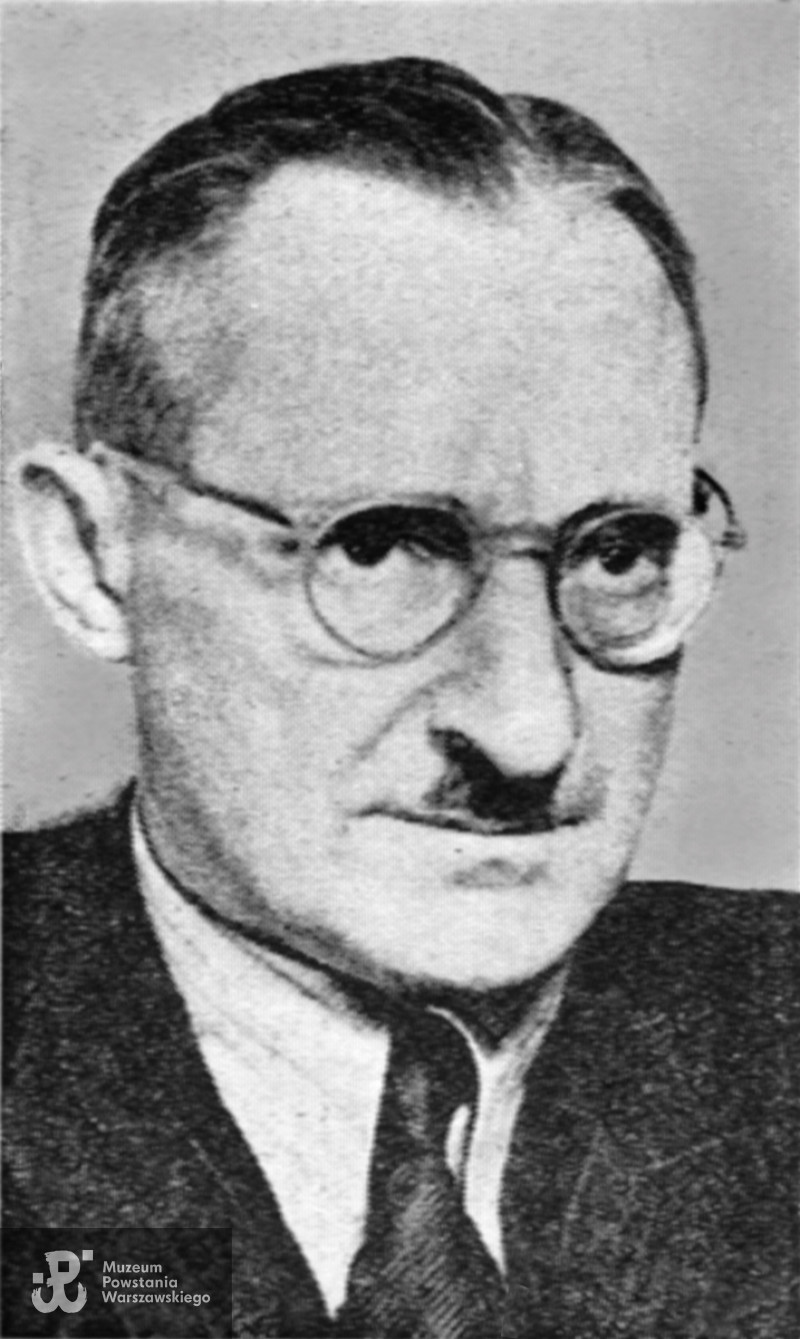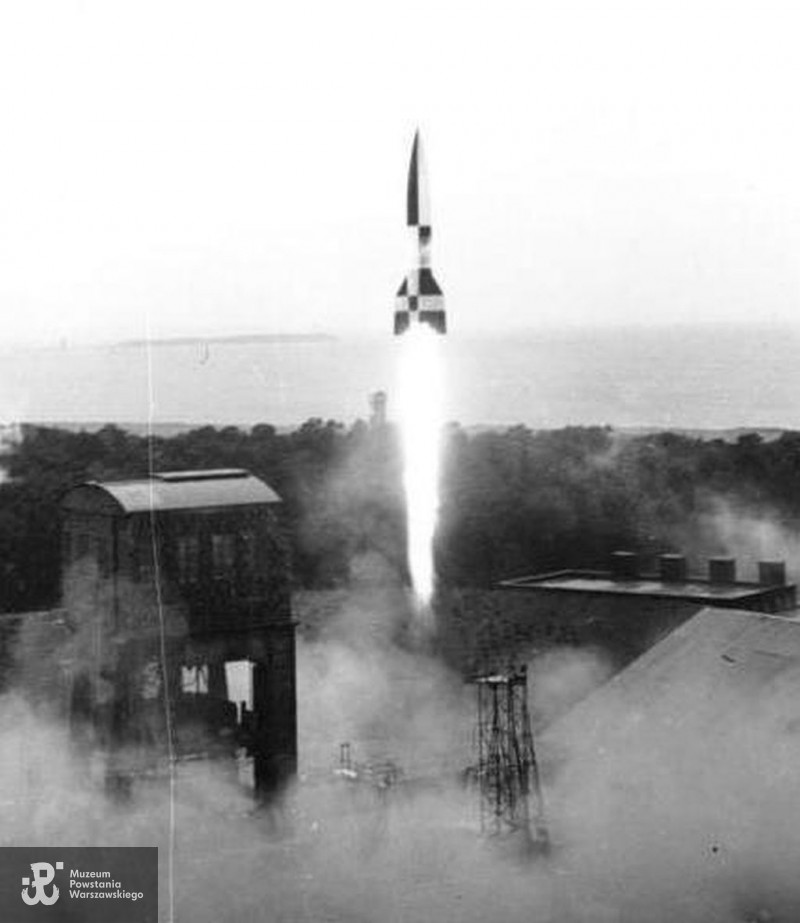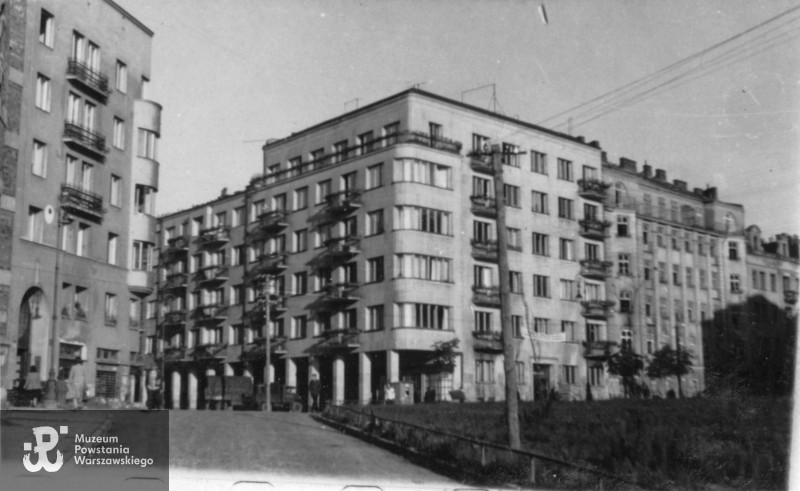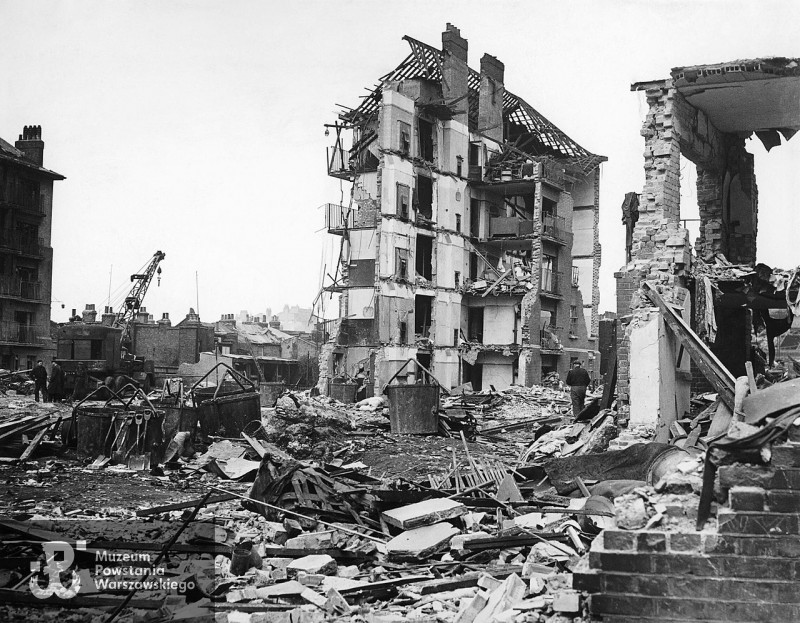Paweł Brudek, PhD
Janusz Groszkowski a Polish radio-frequency (RF) engineering pioneer was one of the first academics in the world to analyze the steering system of V-2, a German ballistic missile. His work helped the Allies to get ready for the attacks of this Hitler’s new ‘Wunderwaffe’.
Janusz Groszkowski (1898–1984) was an outstanding radio-frequency engineer and constructor. He was born in Warsaw in a noble family that had its main property in Groszki near Łęczyca. His love for science came after his Father’s interests who even exchanged letters with Thomas Edison. When Germans permitted the Warsaw University of Technology to open its gates during WWI, Janusz Grochowski was one of the first students to attend lectures at two Faculties, namely the one of Mechanics and Electrotechnics. Groszkowski, 21 years old in 1919, became a deputy commander of the Radio-Communications Battalion of the Polish Army. He was a pioneer in the field of radio-frequency engineering in independent Poland, he organised courses for officers and was the author of the first manual published in this domain.
 Prof. Janusz Groszkowski before 1939. Photo. Wikimedia Commons
Prof. Janusz Groszkowski before 1939. Photo. Wikimedia Commons
Before 1939 he managed to have an excellent professional career as he became professor at the age of 31 having graduated from the Warsaw University of Technology and École militaire in Paris. Between 1929–1939 he was the head of the Radio Engineering Institute (from 1933 the Institute’s name changed to State’s Telecommunications Institute). Between 1933–1939 he was engaged by brigadier general Aleksander Litwinowicz to work for the Temporary Scientific Advisory Committee (TDKN) whose activity was classified and for whom many outstanding scientists worked. Each of them was responsible for another domain and Groszkowski was in charge of radio engineering. The Committee was a kind of a scientific think tank that worked on: synthetic rubber, laser, night vision and even “artificial induction of emotions” to name just a few fields of their interests. Towards the end of 1930s scientists were particularilly interested in rocket propulsion in vehicles moving on land, water and in the air. They also debated on the issue concerning carrying the explosives for long distances as well as the telecommunications systems that would enable steering torpedoes and aircrafts. Once WWII broke out, prof. Groszkowski and the whole Telecommunications Institute was evacuated towards Polish eastern border. He was ofered to leave the country but he refused and stayed in Lviv. Under Soviet occupation he was trying to contribute to Lviv’s University of Technology where he became one of the professors of radio engineering. The Soviet authorities allowed the Univeristy of Technology to remain an educational institution and therefore many scientists found refuge there.
On 22 June 1941 the Third Reich attacked Soviet Union and dreadful persecutions were carried out by Germans also against the employees of the Lviv’s University of Technology. Groszkowski managed to escape to Warsaw where in August 1941 he was employed at the Warsaw University of Technology that was under German governance. Oficially he was having classes about radio engineering but after work we was engaged in the underground teaching. Groszkowski prepared reports about communications, radiolocation and radars. He also analyzed German devices that were acquired by the Polish intelligence and he constructed radio devices for the Underground’s purposes.
When Franz Kutschera, viciously known as the butcher of Warsaw, was killed by Polish Home Army, Gestapo encircled the Warsaw University of Technology and conducted a brutal shakedown, looting the laboratories. That was the moment when professor Groszkowski with Stanisław Ryżko, who was his assistant, hid 60 engraved plates for Home Army’s transmitters. These are his memories that were registered in 1980s by his collegue prof. Arkadiusz Góral:
In Autumn 1943 the Government Delegation for Poland asked prof. Groszkowski to take up a dangerous mission. He would not know its character until May 1944 when he was finally invited to a secret meeting. I knocked the door. Someone opened and I entered into a dark corridor. There was some else who took my coat and led me without a word to a dark room. I was seated at a table and I realized there were a few persons in the room though we could not see each other. We would sit like this for a couple of minutes and remained silent. One by one new people would come and finally someone in charge of the meeting spoke up. I realized he was speaking holding a handkerchief close to his mouth. He said that at each table there are 4 of us and that there are cards in front of us so that in case the light was on we had to pretend to play bridge.
Groszkowski learnt that on the Polish occupied territory Germans had been working hard on their missile weapons. The leader of the meeting revealed the success of Polish intelligence agents who infiltrated German research centre in Peenemünde. It turned out that the Home Army had been making attempts to retrieve elements of the German missiles. The participants of the meeting were informed what were their tasks. Three groups were selected. The first group was responsible for preparing the missile to be transported on the site where it would be intercepted. The second group was engaged in transport and the third (with prof. Groszkowski) was asked to analyze it. The results were to be sent to the HQ of the Polish Armed Forces in London. At the beginning of June through a messenger prof. Groszkowski got into contact with Jerzy Chmielewski who was the head of the Economical Studies Office (Biuro Studiów Gospodarczych) in the 2nd Department of The Home Army’s HQ and together with Antoni Kocjan was in charge of the V-2 operation (the name referred to V-2 missile – Vergeltungswaffe).
The Allied bombers destroyed in an air raid the Peenemünde facility, so Germans moved the production to Nordhausen in the Harz Mountains whereas in Blizna (southern Poland) they used a firing range to test their V-2s till July 1944. They targeted area near Sarnaki upon Bug river (today’s Mazovian district) with their test ballistic missiles. It was there in Sarnaki, where on 20 May 1944 a Home Army unit managed to intercept a missile that did not go off. Chmielewski handed over to Groszkowski two ten kilo boxes filled with devices that were dimantled out of the found V-2 missile. However, he did not explain how the Home Army had had the missile in their hands. Groszkowski was asked to analyze the radio transceiver and the electronic control system of the missile. In the book “Akcja V-1, V-2” published in Warsaw in 1972 Michał Wojewódzki mentioned the problems prof. Groszkowski had to face then in 1944. Professor knew at that time that Germans were capable of steering a V-2 missile via radio all along its trajectory through long distance. The question was if there would be a chance to distort the trajectory of the missile by a signal sent, for example, from England. The signal would be received by the radio of the missile and send the V-2, for example, to the sea. Groszkowski analyzed crystal oscillators used in the radio device of the V-2 to determine its frequencies. He managed to figure out that all along the flight of a missile Germans would receive data about its speed and altitude. They could have caused the V-2 to go off before reaching the target thanks to a radio impulse: I found out that Germans had full connectivity with every single missile. Every V-2 in the air was led and controlled by an oscyloscope.

A V-2 launched in Peenemünde, 1942. Photo. Bundesarchiv, RH8II Bild-B0791-42 BSM / CC-BY-SA 3.0, CC BY-SA 3.0 DE, via Wikimedia Commons
Groszkowski would spent all days in a flat at the corner of Skolimowska/Chocimska Streets in the Mokotów District in Warsaw. The appartment belonged to a German aircraft constructor who worked in the Okęcie airport and was an agent of the Polish intelligence at the same time. Some Polish Underground soldiers would remain on guard at the staircase all the time and it took 10 days for Groszkowski to have the report finished. He handed it over and his part in the project was over.
 Houses at Skolimowska/Chocimska Streets in Warsaw. Photo. Karol Pęcherski. Digital archive of the Warsaw Rising Museum.
Houses at Skolimowska/Chocimska Streets in Warsaw. Photo. Karol Pęcherski. Digital archive of the Warsaw Rising Museum.
Prof. Groszkowski learnt about the details of the V-2 operation already after WW2. All the reports that were written by Polish engineers who analyzed V-2 Wunderwaffe had attachments, namely microfilms, technical drawings on paper and some original parts of the intercepted V-2. They were sent to Great Britain via Polish agents on board of a RAF Dakota aircraft that landed near Tarnów in a daring operation known as ‘Wildhorn III’ on 26 July 1944.
It has to be underlined that Groszkowski was very modest when it comes to his role and contribution to the operation. He paid tribute notably to Home Army soldiers and all the people involved in the most dfifficult part of the operation, namely taking elements of the V-2 out of the marshes of the Bug river and transporting them to Warsaw.
Germans have never reacted to the fact that Poles had intercepted their super secret V-2 missile because they got to know about this after the war ended. Col. Reginald V. Jones, a coordinator of the British classified military projects during WW2, described the achievements of the Polish intelligence in his book “Most Secret War” published in London in 1979. Werner von Braun, the very leader of the Nazi ballistic missiles project, met in 1973 professor Groszkowski at a party in Washington at the Embassy of the Federal Republic of Germany and it was then when von Braun personally said to Groszkowski that he came upon the Polish accomplishments as late as when reading British documentation.
 Destruction caused by V-2 in London on 27 March 1945. Photo Imperial War Museum
Destruction caused by V-2 in London on 27 March 1945. Photo Imperial War Museum
According to Bristish documentation that was analyzed by Michał Wojewódzki, the British exchanged many messages with the Polish side asking them to hurry up and explain many issues. Initially, no one believed that German ballistic missiles existed. Polish reports were considered to be exaggerated. When prof. Groszkowski started his work to unriddle the mistery behind unknown German V-2 devices, on 13 June 1944 one of the V-2s flew over Sweden and went off at 1500 meteres over Bäckebo. The Swedes notified the allies on the incident and a millitary mission was sent there right away. The Brits made a deal with the Swedes, namely that more than one Spitfire would be handed over to Sweden. In return, the British got the remaining parts of the missile that were found and sent them to a secret centre in Farnborough. The official version (English language version of Wikipedia) says today that the missile handed over by the Swedes made it possible for the British to know in full what V-2 was about before the Poles sent in their report and parts of the found milssile from Sarnaki (that reached Brindisi on 26 July 1944 and then were sent to the UK).
The fact that the scientists working in Farnborough started to reconstruct the missile (Big Ben Project) means that they had to have the parts retrieved from BOTH missiles, the one that went off in the Swedish skies and the one found in Sarnaki in occupied Poland that must have been in better shape any way.
It is worth noting that the Farnborough project started on 31 July 1944 so most surely the British must have been waiting for the delivery of the Polish report and the “Sarnaki” missile. Unfortunately, these facts are rarely mentioned in the English language historiography (with no information whatsoever about the Polish reports). A rethorical question might be asked whether deliberate ignorance when it comes to the Polish achievements regarding V-2 is not connected to the fact that the British side realized that they have prematurely given Spitfires to Swedes.
***
After WW2 prof. Groszkowski was again the head of the Institute of Telecommunications (till 1951), he worked at the Warsaw University of Technology and at the Millitary University of Technology. Between 1962-1971 he was the president of the Polish Academy of Sciences (PAN).

University of Technology in Warsaw before 1939. Photo. Karol Pęcherski. Digital archive of the Warsaw Rising Museum.
Many years had passed when professor Groszkowski learnt that he miraculously missed being arrested by Germans. It turned out in 1960s that the archive of the prewar Temporary Scientific Advisory Committee was in German hands all along WW2 (including the protocols of the reports, names of the members etc.) However, the German intelligence services would indolently sort the documents that were stocked in the the Cistercian monastery in Oliwa near Gdańsk where they were hidden after being taken from Warsaw. The name of Professor never came to light.
